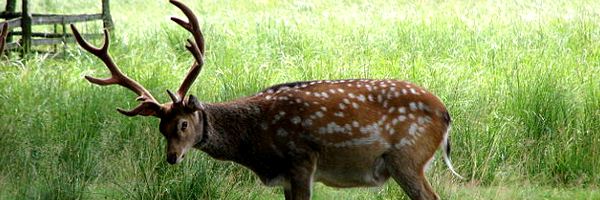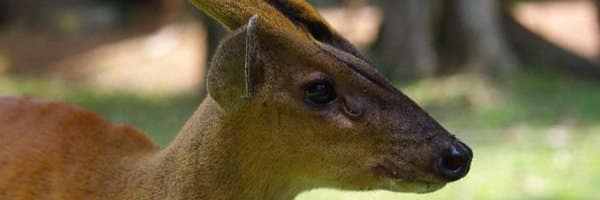Sika Deer – Cervus nippon
The Sika Deer can be either small or medium in size, depending on the area where it happens to live. You will notice that they all have small legs and a very small head. The males have antlers that generally have either three or four points on them. Some do have more though if they are in a more dominant role. While the females don’t grow antlers they do have two black bumps that grow in the same location on the head.
They do range significantly in coloring too. Most of them are either a light tan or a medium brown color. They can also feature white spots that don’t go away after they are mature. Others feature a darker color that is almost gray and they don’t have any spots at all. In spite of the color differences they are indeed the same species of deer. DNA testing confirms they are all Sika Deer.
Full grown males can range in weight from 150 to 240 pounds. Most of the females weigh about 70 to 100 pounds.
Sika Deer Distribution
Texas and Oklahoma are the main location of this type of deer and there are many hybrid programs there. The result of this is better genetics and larger sized Sika Deer. The woodland areas are where you will find them living. They also tend to be in areas where they don’t have to worry about too much snowfall as Austria and Germany that makes it easier for them to survive through the harsh winter months.
However, some of the Sika Deer are known to live in the open grasslands out there. This is believed to be a shift from their normal habitat though. They have moved to find food and to find a habitat where they are able to freely move around without the scent markings of other deer.
Sika Deer Behavior
The Sika Deer is extremely territorial and that can make it very hard for the young males to find a territory of their own. They will often form bachelor herds until it is time for mating to take place. Then they can become aggressive towards each other and fight to be able to mate with females.
Sika Deer Feeding
Sika Deer are very opportunistic when it comes to the foods they eat. As a result they seem to do very well finding enough to survive on. The specifics of what they will eat depends though on the region where they reside.
Some of the common types of food that they are known to eat include grass, leaves, shoots, and twigs. They also eat many woody types of plants but they are only offered during specific periods of the season. When grass is readily offered though they will bypass other foods to consume that one.
Sika Deer Reproduction
The fight for mating is very heated among the bucks. They want to be able to form a harem of several females that they will be the only one to mate with. They have to show that they are strong enough to do so first. This is why they may be ready to physically mate around two years of age but they can be two or three times that age before they really do so.
The fawns are born 7 months after mating has taken place. It is very rare when more than one fawn is born at a time. The young are hidden in time to allow them to get used to the surroundings and to gain their strength. The mother will come back to check on them often and to feed them milk from her body.







